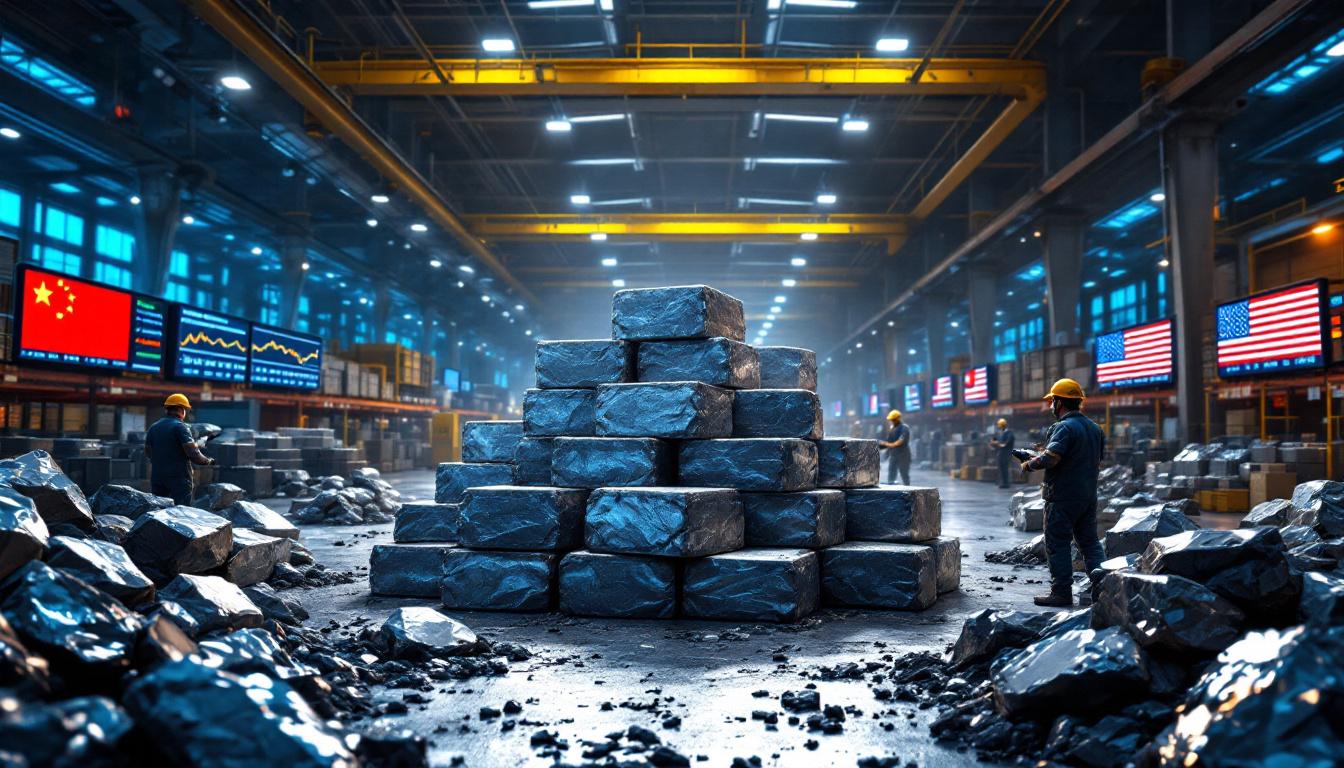How Are Trump's Tariffs Affecting the Global Silver Market?
In global silver market tariffs 2025, the market is experiencing unprecedented turbulence as trade tensions escalate under President Trump's second administration. Lease rates for silver surged to over 6% in March 2025 after an even larger spike in February. This movement reflects anxieties over policy changes, as seen in trump's policies reshaping commodity markets.
Reciprocal tariff measures set to take effect on April 2, 2025, threaten to disrupt silver supply chains that have functioned smoothly for decades. According to precious metals analyst Max Layton from Citigroup, investors are "underpricing the scale and impact" of the coming trade restrictions.
In addition, silver prices have risen approximately 17% year-to-date in 2025. This growth makes silver one of the best-performing commodities amid a flight to safe havens during geopolitical uncertainty. However, the price increases are not uniform across markets, challenging traders with physical delivery obligations.
"What we're witnessing isn't just typical market volatility," explains Daniel Ghali, senior commodity strategist at TD Securities. He emphasises that the tariffs are creating structural changes in the flow of silver between markets.
What Are the Key Market Dislocations in Silver Trading?
One notable sign of market stress is the significant price disparity. While spot silver in London hovers around $34 per ounce, Comex futures in New York trade nearly 70 cents higher. Consequently, traders capitalise on massive arbitrage opportunities.
This price dislocation has fuelled a large-scale movement of physical silver from London vaults to New York warehouses. In addition, many industry players now access heightened global commodities market insights and investment opportunities.
George Heppel of BMO Capital Markets notes, "Under normal conditions, arbitrage should quickly eliminate such disparities." However, the sustained gap indicates deeper issues with market efficiency.
Meanwhile, London silver stockpiles have dropped to record lows. Since early 2023, available silver has decreased by over 60%, creating liquidity concerns for European industrial users.
Why Is Silver Transport Creating Unique Market Challenges?
Unlike gold, which is typically transported by air owing to its high value-to-weight ratio, silver is primarily shipped by sea. This difference exacerbates market imbalances significantly.
Cao Shanshan of COFCO Futures Co. explains, "When gold markets experience dislocation, physical arbitrage can resolve within days." In contrast, silver shipments may take weeks or even months to arrive, prolonging supply shocks.
A standard shipping container can hold about 25 tons of silver, worth roughly $27 million at current prices. In addition, gold in the same volume would be valued at over $1.7 billion, justifying the cost of air transport. This discrepancy slows down the resolution of silver imbalances.
Furthermore, transit times of 2-3 weeks from European ports to New York allow price dislocations to persist. Geopolitical tensions and shipping disruptions only add further delays.
What Are the Current Silver Inventory Trends?
US Comex-registered silver inventories have surged to their highest level since 1992. They increased by a record 40% in Q1 2025, a change directly correlated with new tariff policies and emerging arbitrage opportunities.
In stark contrast, London's silver reserves have depleted to record lows. Much of the remaining silver is tied up in exchange-traded products like the iShares Silver Trust (SLV), limiting immediate market access. This trend is encapsulated well in the gold and silver market trends recap.
A senior trader remarked, "It's a tale of two cities." New York now brims with silver, while London faces severe shortages for industrial use and physical delivery requirements.
Consequently, vital industries—from solar panel manufacturing to electronic components—are securing longer-term contracts to hedge against future disruptions.
How Significant Is the US-Canada-Mexico Silver Trade Relationship?
North America's silver ecosystem is among the most integrated globally. The United States imports nearly 70% of its silver from Canada and Mexico—a reliance that intensifies regional vulnerabilities in trade tensions.
Canada's silver mining sector, largely based in British Columbia and Ontario, has reliably serviced the U.S. market for decades. Mexico, with prominent mines in Zacatecas, Chihuahua, and Sonora, remains the world's largest silver producer.
In response to U.S. tariffs, Canada has imposed 25% counter-tariffs on roughly C$30 billion of U.S.-made items, including silver. This tit-for-tat approach adds another layer of uncertainty. For further context on the broader global implications, review how trump's china tariff threat shook global metal markets.
A leading mineral economist warns that this interdependence makes the region highly sensitive to any shifts from traditional free-trade practices, highlighting risks in optimised supply chains.
What Are Experts Predicting for Silver Prices?
Market analysts have revised their forecasts in response to escalating trade tensions. Max Layton from Citigroup suggests current models may be "underpricing the scale and impact" of the April 2 reciprocal tariffs, thereby indicating substantial potential upside.
Citigroup's analysis points to a target range of $42-45 per ounce by Q3 2025, representing roughly a 25-30% increase from current levels. In addition, supply constraints and a migration towards safe havens fuel this bullish expectation.
However, strategists at Morgan Stanley offer a more conservative outlook. They predict that prices may stabilise between $36-38 per ounce once shipping logistics adjust. Consequently, silver market volatility has soared; the CBOE Silver ETF Volatility Index increased by over 45% since January 2025.
These trends resonate with tariff policies fueling record precious metal price surges, further underscoring current market uncertainty.
How Are Silver Lease Rates Reflecting Market Stress?
The dramatic surge in silver lease rates clearly indicates market stress. One-month lease rates reached over 6% in March 2025 after a significant spike in February. These elevated rates, normally ranging between 0.1% and 0.5%, mirror the severe tightness in physical metal availability—especially in London.
Cao Shanshan predicts that these heightened lease rates will persist for "about two to three months" as the market adjusts to ongoing transfers of physical silver. In addition, increased borrowing costs compel companies to reexamine their production strategies, shifting the economics of industrial usage.
What Are the Potential Long-Term Consequences for the Silver Market?
Beyond immediate price impacts, current disruptions may permanently alter how silver is traded, stored, and transported globally. TD Securities' Daniel Ghali warns that even if disruptions cease, the market cannot revert to its previous state.
In addition, several long-term adaptations are emerging within the silver ecosystem. These include:
- Geographic diversification of storage across multiple jurisdictions.
- Increased premiums for physical metal in import-dependent regions.
- Accelerated recycling initiatives focused on high-volume industrial applications.
- Development of synthetic hedging strategies that bypass physical delivery.
- Potential relocation of silver-intensive manufacturing facilities.
Warehouse operators in Singapore, Dubai, and Switzerland are expanding capacity outside the traditional London-New York axis. Consequently, these shifts aim to mitigate long-term risks while responding to persistent uncertainty.
How Do Silver Market Disruptions Compare to Gold?
Both precious metals have faced disruption from trade tensions in 2025. However, silver encounters unique challenges due to its physical characteristics and market structure.
Gold benefits from air transport, which allows for rapid arbitrage and quicker market adjustments. In contrast, silver shipments depend on sea freight, which prolongs dislocations and market imbalances for weeks or even months.
Another stark difference is industrial use. While gold's industrial consumption accounts for roughly 10-15% of annual demand, silver’s consumption is around 50-60%. Consequently, silver is more sensitive to supply chain disruptions.
What Should Investors Know About Silver Market Liquidity?
Record-high silver inventories in New York combined with record-low levels in London have created a significant geographical imbalance. Much of London's silver is tied to exchange-traded products, reducing immediate physical liquidity.
This liquidity disparity creates both risks and opportunities. Investors must consider that physical silver offers security, though with higher premiums, while exchange-traded products promise convenience—albeit with potential sourcing challenges.
Futures contracts add complexity, as delivery location now plays a crucial role in valuation. For a broader perspective on market challenges, consult this market under strain report.
As one veteran trader noted, "In thirty years of trading, I’ve never seen regional dynamics influence price formation so drastically." His observation highlights the growing importance of recognising regional disparities.
Global silver market tariffs 2025 have reshaped the landscape for traders, investors, and industrial users alike. Increased volatility, supply challenges, and shifting market dynamics compel all stakeholders to adopt new strategies.
Furthermore, ongoing trade tensions continue to fuel uncertainty. Industry professionals must remain vigilant and adaptable as market conditions evolve. The coming months will likely reveal further adjustments in both physical and paper markets.
Altogether, these developments underscore the intricate connection between political measures and commodity markets. They prompt a thorough reassessment of long-standing investment strategies while ensuring that the impact of global silver market tariffs 2025 is felt throughout every facet of the industry.
Are you looking to anticipate the next major silver price movement?
Discover market-moving announcements before they impact your portfolio with Discovery Alert's proprietary Discovery IQ model, which provides real-time insights into significant ASX mineral discoveries across precious metals and other commodities. Explore how historic discoveries have generated substantial returns by visiting the Discovery Alert discoveries page.




